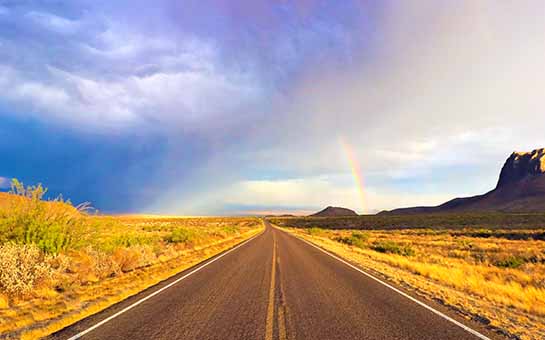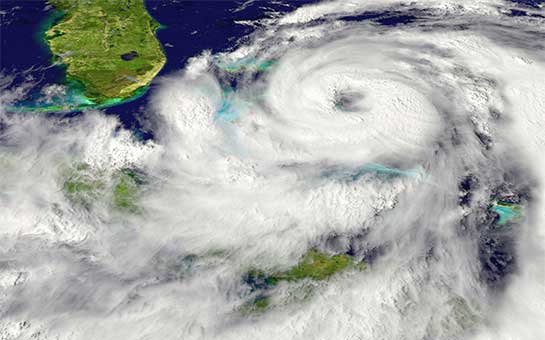Texas is the second-largest US state, both geographically and in terms of population. It only trails Alaska in terms of size, and with a population of nearly 30 million, only California has more residents. Everything is big in the Lone Star State, and the varied landscapes, sprawling cities, and endless countryside make Texas a destination for travelers from around the world.
If you’re ready to experience all that Texas has to offer, be sure you’re prepared for the unexpected. Purchase visitors medical insurance or travel insurance before you go.
Visitors Medical Insurance for Travelers in Texas – FAQs
Even when you do all you can to be safe, sometimes you can’t avoid getting sick or injured. If this happens during a trip to the United States and medical treatment is necessary, you could be in for a rude shock when you receive the bill. The health insurance from your home country will not be accepted here, so you will need to have visitors medical insurance to receive affordable care.
Do I need visitors medical insurance for Texas?
Tourists are not legally required to have visitors medical insurance for Texas or any other state in the USA, but due to the high price of healthcare, it is very necessary. You cannot guarantee that you will not suffer any medical issues while in the USA, so it is important to have coverage if you require treatment.
Why buy visitors medical insurance before traveling to Texas?
The average cost of a single night spent in the hospital in the USA can cost about $14,000. It can be far more if you require emergency surgery. If you are not prepared to pay that full amount out of your own pocket, you should invest in visitors medical insurance. It is short-term health insurance for visitors to the USA that is designed to cover new medical conditions that occur after the effective date of the policy. Without it, it may only take one incident to bankrupt you.
Trip Cancellation Insurance for Travelers in Texas – FAQs
Trip cancellation insurance, also known as travel insurance, is primarily designed to protect the prepaid, nonrefundable money you’ve invested in your trip in case you are required to cancel it. Trip cancellation insurance is typically only available to US residents, and can provide an array of other benefits.
Why should I get trip cancellation insurance for my Texas travel?
The majority of your major prepaid trip expenses are not refundable; things like airfare and hotels. If you have to cancel your trip, you may not receive the lion’s share of your trip deposit back. You can prevent being put in this situation by purchasing trip cancellation insurance. It can provide you with a way to be reimbursed for the nonrefundable portion of your prepaid travel expenses, so long as your trip was cancelled for a reason that’s outlined in the policy.
What can be covered by trip cancellation insurance for Texas?
While trip cancellation coverage is one component, a travel insurance plan for Texas can also cover instances such as emergency medical care, travel delay, trip interruption, and even lost or delayed baggage. The exact coverage and level of coverage will depend upon the policy you purchase. Therefore, it is recommended that you compare several options on this website before deciding which is the best for your needs.
Texas’ Most Popular Places for Travel
Due to its sheer size, Texas features a variety of landscapes. There are piney woods in the east, rolling plains to the north, subtropical coasts to the south, and endless desert in the west. And the cities of Texas are as varied as its geography. While you likely won’t have time to visit them all in a single trip, these are our recommendations for places to visit while in Texas.
Dallas–Fort Worth
The Dallas–Fort Worth area, as the name suggests, contains the twin cities of Dallas and Fort Worth. As a major hub of travel and commerce, the area has a number of popular tourist attractions. Dealey Plaza, the site of President John F. Kennedy's assassination in 1963, is home to the Sixth Floor Museum, which displays photographs, videos, forensic evidence, and artifacts related to the shooting and subsequent investigation. The entire surrounding area has been preserved to look much as it did on that fateful day in 1963.
The Perot Museum of Nature and Science has themed exhibits about engineering, energy, evolution, earth science, astronomy, and more. Reunion Tower's most striking feature is a lit-up ball at the top with a revolving restaurant and observation level. The Fort Worth Stockyards host rodeos, concerts, theatrical performances, cattle-drive demonstrations, and other events from the traditions of Texas' cattle industry.
Austin
About three hours south of DFW lies Austin, home of the State Capitol. The grounds boast walking paths and monuments to Texas historical figures, and the Visitors Center contains a small museum dedicated to city and state history. Downtown Sixth Street, the center of the Austin nightlife, is packed with bars and shops. A little further south, South Congress Avenue is a popular shopping destination, populated with independent businesses like clothing boutiques, craft stores, and food trucks. Ann W. Richards Congress Avenue Bridge is known for the 1.5 million bats that congregate underneath and fly away at dusk each night between March and November. Finally, Zilker Park is home to the spring-fed Barton Springs Pool, Zilker Botanical Garden, and the yearly Austin City Limits Music Festival.
Houston
As the fourth-most-populous city in the US, Houston offers plenty of cultural, dining, shopping, and entertainment options. NASA's Johnson Space Center is home to mission control and astronaut training facilities. Space Center Houston, the complex's visitor center, has a space shuttle replica, a space station replica, and a display of moon rocks to touch. Houston's Museum District has 19 museums, 11 of which offer free admission. Just a few are the Museum of Fine Arts, the Houston Museum of Natural Science, the Children's Museum of Houston, and the Holocaust Museum. The Houston Livestock Show and Rodeo, a 19-day event, occurs annually during February or March. The festival offers carnival rides, games, and food stands, and rodeo events feature the state's finest cowboys showing off their skills. The event also includes the Downtown Rodeo Parade.
San Antonio
San Antonio's most famous tourist attraction is the Alamo, a former mission that was the site of the Battle of the Alamo in 1836. During the Texas Revolution, a small Texan force barricaded themselves inside in defense against a Mexican force of almost 1,800. The Texan fighters were ultimately killed, but the battle proved a rallying point that coined the phrase “Remember the Alamo!” Admission is free to visitors. The site offers daily family-friendly programs and guided tours. San Antonio is also home to the River Walk, a part of the San Antonio River that cuts through the city and is lined with walking paths and restaurants. Barges float the river to offer guided tours of the city and dinner cruises.
The Gulf Coast
The Gulf Coast offers scenic ocean views and beach activities. Galveston, less than an hour from Houston, has miles of sandy beaches with shallow, calm, warm water. Attractions in the area include the amusement park - Pleasure Pier - as well as Moody Gardens and Aquarium, featuring glass pyramids, an aquarium, a rainforest, and an amusement park. Corpus Christi is another beach town with offerings like the Padre Island National Seashore, a tour of the naval museum aboard the USS Lexington, and the Texas State Aquarium. Just offshore, South Padre Island is the world's largest undeveloped barrier island. The town of South Padre is a popular spring break destination for Texas university students.
Key Guidelines for Travelers in Texas
The guidelines for visiting Texas largely depend on where you visit. If you’re exploring the desert expanses of the far western portion of the state, you’ll have far different priorities than in downtown Houston. However, wherever you visit in Texas, we suggest you keep the following in mind.
Vast Distances
Texas is a big state. How big? Well, it’s nearly twice the size of Germany. In fact, if Texas were a country, it would be the 40th largest in the world. This means that the distances between cities are large. If you’re renting a car to explore the state, take the ample travel time between destinations into account.
Wild Weather
The different regions of Texas can experience every sort of weather imaginable. Strong storms that can produce tornadoes are possible throughout much of the state in the spring. Also, be aware that hurricane season in the US runs from June 1 to November 30 each year, and Texas is no stranger to heavy storms. In 2017, Hurricane Harvey came in from the Gulf of Mexico and caused significant flooding in Houston, resulting in an estimated $125 billion in damage. Understand the way your insurance covers severe weather events, and pay attention to local forecasts and media to stay safe.
Tempting Texas Cuisine
Ask any native Texan, and they'll tell you that the staples of Texas cuisine are Tex-Mex and barbecue. Tex-Mex is a fusion of recipes from northern Mexico and early European settlers that includes tacos, enchiladas, fajitas, chimichangas, tamales, and tortilla chips served with guacamole, salsa, or chili con queso dip. The mainstays of Texas barbecue include beef brisket, sausage, ribs, and hamburgers (supposedly invented in Texas) served with pinto beans, potato salad, white bread, pickles, jalapenos, and a variety of spicy sauces. Make sure you come with a big appetite—the portions are bigger in Texas, too!
Before You Travel to Texas – Do This
- Plan an itinerary that focuses on one region – Texas is simply too large to see all in one trip, so consider picking one city and exploring the surrounding area.
- If traveling outside of any major city, rent a car ahead of time. There is essentially no public transit in rural areas.
- Be a smart traveler; protect your health and finances with visitors medical insurance or travel insurance.

